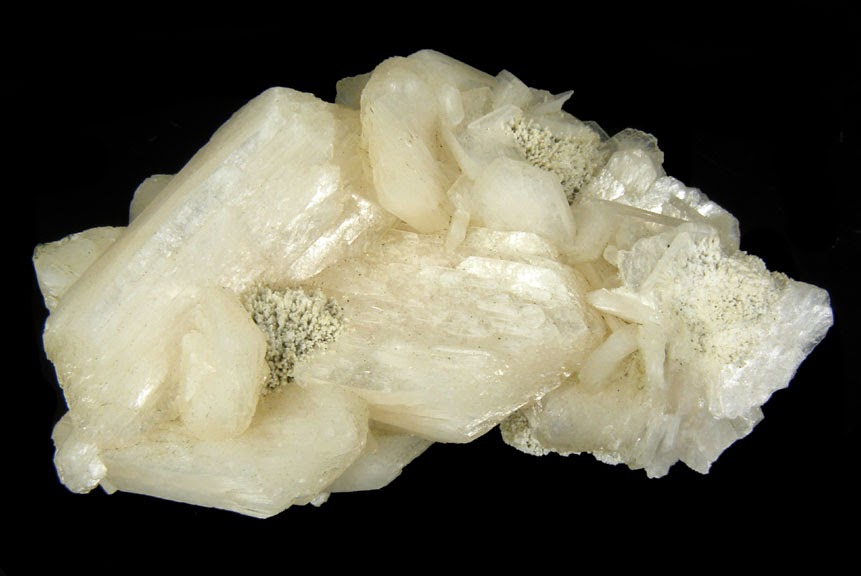
Chemical Formula: CaAl2Si4O12·4H2O
Locality: Nagy-Ag, Transylvania of Romania.
Name Origin: Named after the Frenchman, F. P. N. de Laumont (1747-1834).
Laumontite is a mineral, one of the zeolite group. Its molecular formula is CaAl2Si4O12·4H2O, a hydrated calcium-aluminium silicate. Potassium or sodium may substitute for the calcium but only in very small amounts.
The identification of laumontite goes back to the early days of mineralogy. It was first named lomonite by R. Jameson (System of Mineralogy) in 1805, and laumonite by René Just Haüy in 1809. The current name was given by K.C. von Leonhard (Handbuch der Oryktognosie) in 1821. It is named after Gillet de Laumont who collected samples from lead mines in Huelgoat, Brittany, making them the type locality.
Laumontite easily dehydrates when stored in a low humidity environment. When freshly collected, if it has not already been exposed to the environment, it can be translucent or transparent. Over a period of hours to days the loss of water turns it opaque white. In the past, this variety has been called leonhardite, though this is not a valid mineral species. The dehydrated laumontite is very friable, often falling into a powder at the slightest touch.
History
Discovery date : 1805
Town of Origin : MINES HUELGOET, BRETAGNE
Country of Origin : FRANCE
Optical properties
Optical and misc. Properties : Transparent to translucent to opaque
Refractive Index: from 1,50 to 1,52
Axial angle 2V : 26-47°
Physical Properties
Cleavage: {010} Perfect, {110} Perfect
Color: Brownish, Gray, Yellowish, Pearl white, Pink.
Density: 2.25 – 2.35, Average = 2.29
Diaphaneity: Transparent to translucent to opaque
Fracture: Brittle – Conchoidal – Very brittle fracture producing small, conchoidal fragments.
Hardness: 3.5-4 – Copper Penny-Fluorite
Luminescence: Fluorescent, Short UV=Weak white, Long UV=weak white.
Luster: Vitreous (Glassy)
Streak: white
Photos :














